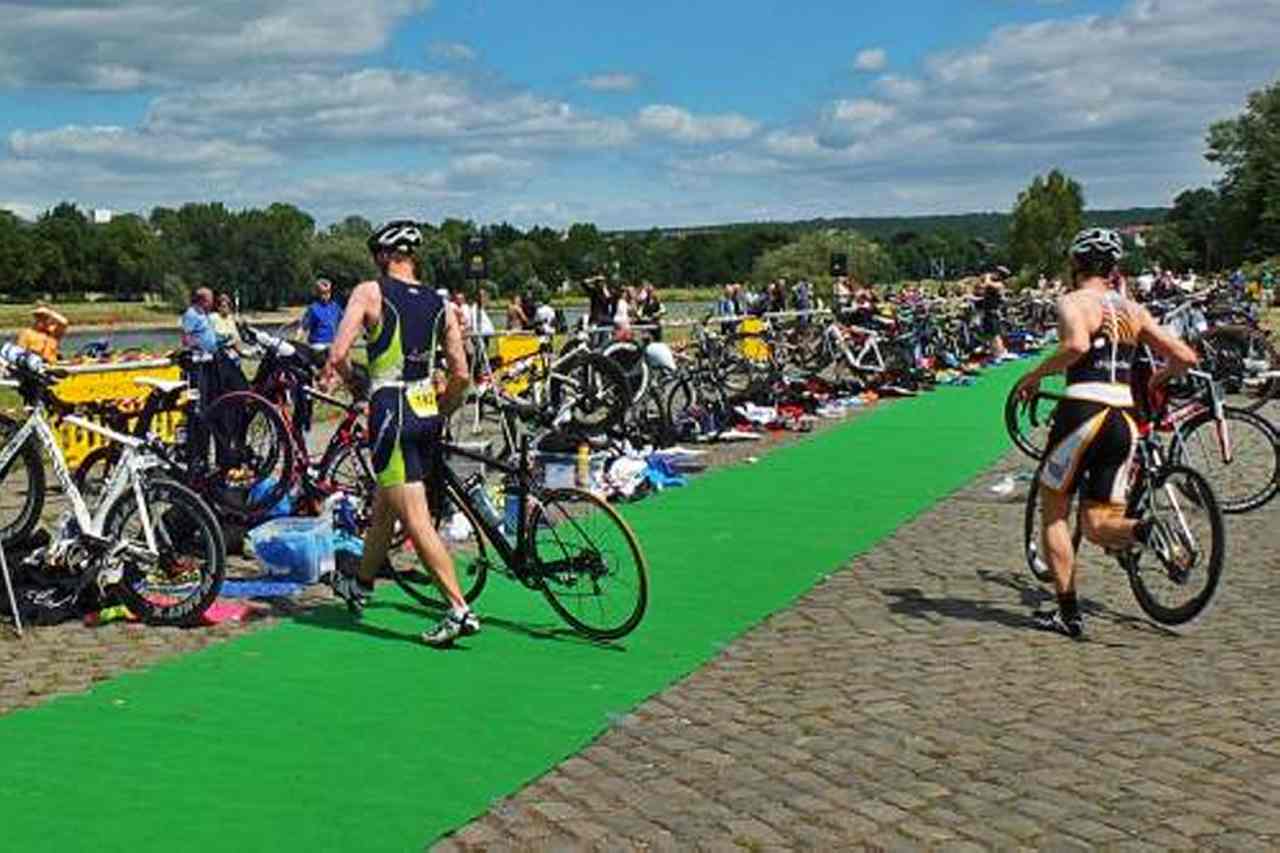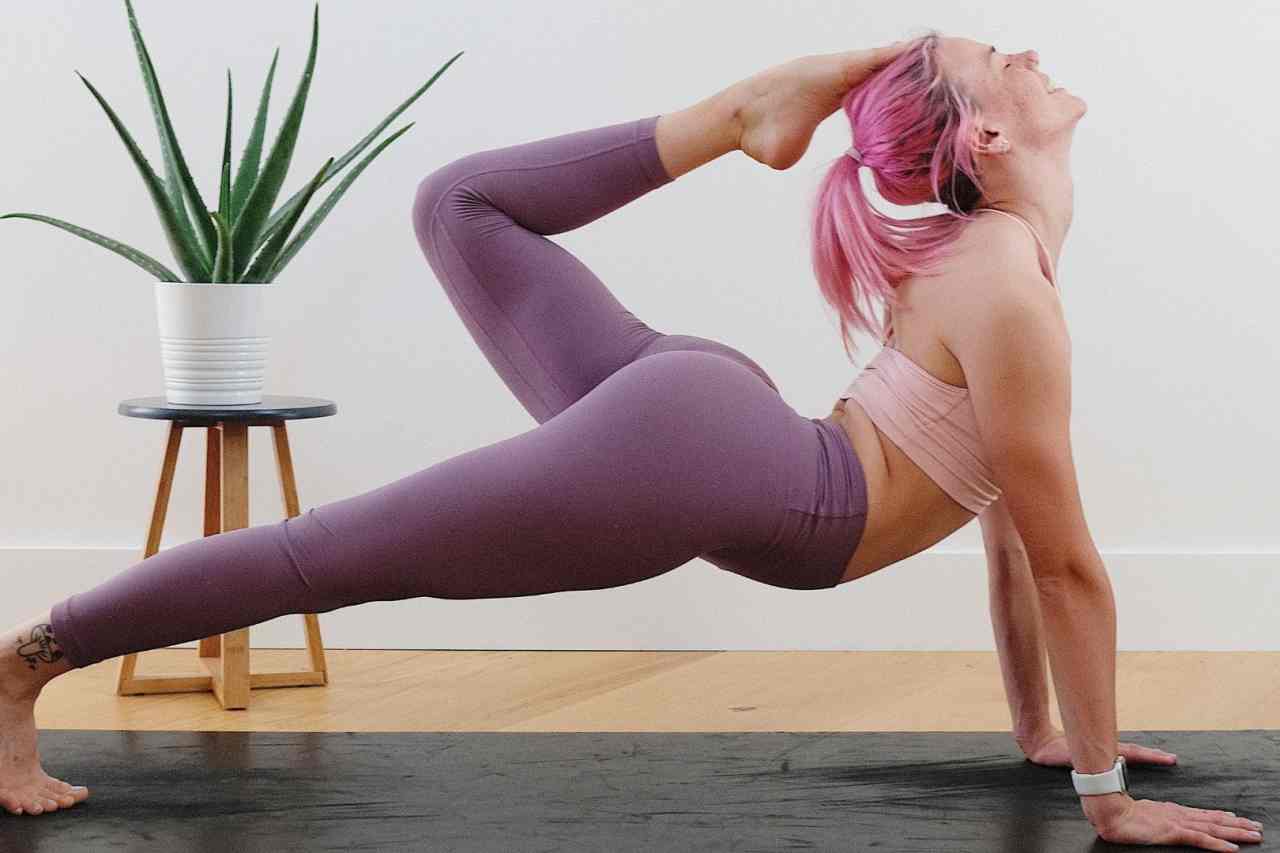Triathletes have been doing brick workouts (running right off of the bike as you would in a race) for ages. Brick sessions are a valuable training tool that comes with the territory of managing three sports instead of one. The question is not whether or not you should do bricks, but how often should you do them, and how they should be structured. Let’s clear that up by asking a simple question:
What is the purpose of your workout?
Getting the most out of your brick workouts will make your transition a strength, instead of a liability on race day. [Photo courtesy Pixabay]
Why Do Brick Workouts?
If you are self-coaching or creating your own training plans, you must determine a purpose for each workout. Whether it is meant to promote recovery, increase your aerobic output, or improve movement efficiency, the purpose should be crystal clear. As a triathlete, this becomes even more important. Managing three sports often means there will be days with multiple workouts. Understanding the interplay between these workouts, both in the same day and throughout the week, is crucial to your overall success.
So how do you answer this question when it comes to brick workouts?
Two main things are at play when you do bricks: learning to run with “bike legs,” and preparing your body for race-like exercise volume. The volume piece is fairly simple. You want to do bricks that will mentally and physically prepare you for the rigors of spending several hours on the bike and run. There is no question that bricks are valuable for crafting this endurance.
Learning to Run on Bike Legs
The more interesting benefit of bricks is training for the transition. When you come off of a long and hard bike leg, your hip flexors are in a shortened state, much like you would experience from sitting all day. When you transition into the run, tight hip flexors limit your posterior extension and shorten your stride length, even if you normally have excellent mechanics.
After a mile or two, these muscles loosen up, and you will return to your normal stride. In the meantime, you have running form that is a little wonky and requires some changes on your part to hold your race pace. Running speed can be broken down like this:
Pace = Stride Length x Stride Frequency (cadence)
While this formula ignores a whole bunch of finer points, it illuminates the one big difference you will notice coming off the bike: To run at the race pace you used in your running-only training workouts, you will have to increase your cadence. This will help offset the shortened stride until your body fully transitions back to its “normal” run mode. To help the process along, it is beneficial to spend the last 5-10 minutes of your bike leg at a higher cadence (90-100+ revolutions per minute) to prepare your mind and body for this switch.
We also have to account for the mental piece of the equation. Although it is a physical act, transitioning from bike to run is a mental exercise. A lot of the value for brick workouts comes from knowing how to finish your ride in a way that optimizes your run. They can also teach you to be patient and make the most of running on your bike legs (read: being in pain and feeling awkward). It takes practice to get comfortable running differently until your body returns to running like you trained it to.
Keeping these things in mind, we can nail down three clear purposes of doing bricks:
- Practicing the running form you have coming off the bike (shorter stride, higher cadence).
- Practicing how you finish your bike leg to optimize your transition back to your normal running form (again, higher cadence).
- Preparing your body for the amount of bike/run volume you will see on race day.
Don’t Overdose on Bricks
Too often I see athletes overdo it when it comes to scheduling bricks into their workouts. This mistake stems from misunderstanding the role brick workouts play in training.
Brick workouts are not the place to optimize your running or cycling efficiency. Becoming effective at either discipline is best done by doing specific, high-quality work on those areas. That means separate, focused workouts aimed at improving your efficiency, endurance, or aerobic/anaerobic output.
When you run off the bike too often, or even just train on tired legs too frequently, you run the risk of adopting poor movement patterns. Given a challenge, your body is incredibly adept at finding ways to keep you moving. Unfortunately, it often does so at the expense of good form or healthy biomechanics, which could set you up for injury and frustration.
How to Use a Brick
So how do brick workouts look in a typical schedule? Here are two options that will fulfill the three purposes of doing bricks:
- Short “T-Runs” (Transition Runs): These are super short 1-2 mile easy runs off of a regularly scheduled bike workout. The extra volume is not enough to have any deleterious effects. These runs are a great opportunity to mentally prepare for the challenge of the transition without internalizing poor running habits. You can sprinkle these in several times a week or you can save them for when you get closer to race day and want to sharpen the sword.
- Big Bricks: To address the mental and physical demands of race day, it’s good to do one big brick every 1-2 weeks. As a guideline, the run portion should be about 10 percent of the bike mileage (100 mile bike = 10 mile run) or about 25 percent of the time (6 hour ride, 90 minute run). As you progress, dial these proportions in to your specific needs.
Consider how brick workouts fit into your overall picture, and plan accordingly. As with any training plan, ensure that your workouts are becoming progressively more race-specific as you approach the big day. Correctly integrating bricks into your overall training plan is an added challenge, but make sure you get them in. You’ll be glad you did come race day.
How do you know what your running race pace is, anyway?
Don’t Race Your Training: Middle Distance Running Repeats
About Shawn Gerber
Shawn is a coach, endurance athlete, and writer with a (slight) obsession for testing the limits. Initially from a cycling background, Shawn moved into triathlon where the sport and people captured his heart, and lit a fire that eventually kickstarted his fitness career.
Shawn specializes in coaching endurance athletes and works with triathletes, runners, cyclists, and swimmers across the globe through his company Rare Air Fitness.
Helping people transform their lives with fitness and nutrition is Shawn’s other love. He is passionate about helping the everyday person become the best version of themselves. Shawn works with people who want to look, feel, and move better, and offers one-on-one and small group training sessions through his other brand, Shawn Gerber Fitness.
He lives in Wooster, Ohio (which is a great basecamp for all kinds of adventures) and believes the right number of bikes to own is n+1. He has way too many running shoes, is a strong believer in bacon and chocolate and, believe it or not, has never drank coffee.













